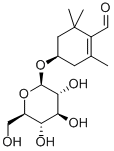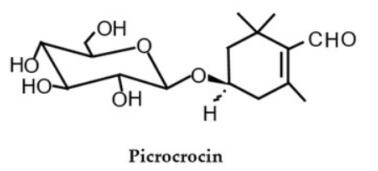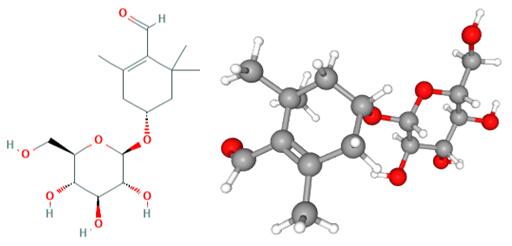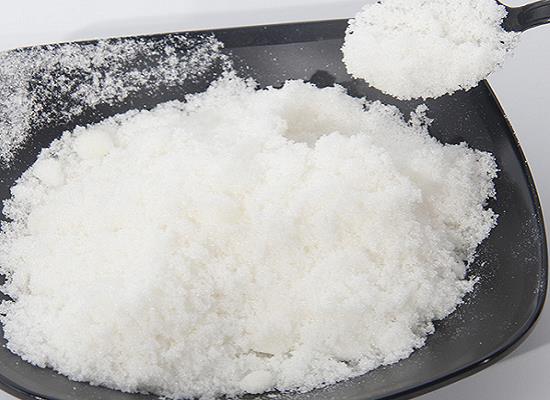Picrocrocin: biological properties and benefits on human health
General Description
Picrocrocin, a compound in saffron, demonstrates limited antioxidant activity but may induce apoptosis in specific cells and exhibits significant antioxidant and anti-inflammatory effects, protecting against oxidative damage and offering cardiovascular benefits. Studies suggest that saffron components, including picrocrocin and crocetin, show promise in treating neuropsychiatric diseases by modulating neurotransmitter systems. Additionally, picrocrocin and saffron components have been found to possess cardioprotective properties, reducing stroke severity and addressing risk factors for cardiovascular diseases. Overall, safranal exhibits more prominent antioxidant and protective capabilities across various disease models, indicating its potential for human health benefits.
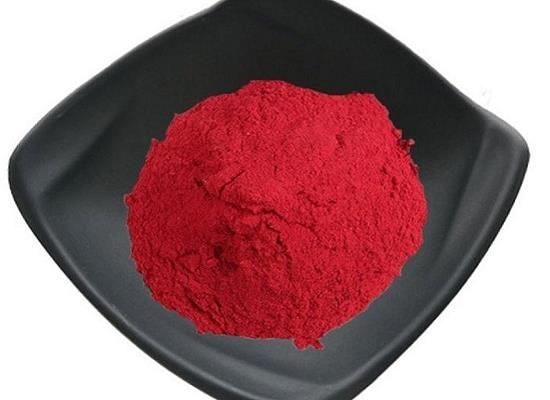
Figure 1. Picrocrocin
Biological properties
Picrocrocin is a compound found in saffron that exhibits various biological properties. In terms of antioxidant activity, picrocrocin's effects are limited compared to crocins, another compound in saffron. Studies suggest that picrocrocin is not effective against oxidant-induced DNA damage and may even reduce the proliferation of certain cells. However, it has been implicated in causing apoptosis in specific cell types. On the other hand, safranal, a terpenoid compound derived from picrocrocin, demonstrates significant antioxidant properties. It has been shown to exert antioxidant and anti-inflammatory effects in cases of type-2 diabetes and diabetic nephropathy, as well as in the context of neurodegenerative diseases. Safranal has also been observed to protect mitochondrial activity and prevent oxidative damage in various cell types, including those relevant to Alzheimer's disease. Additionally, safranal has been found to have a relaxant activity on isolated rat aorta, attributed to its ability to block L-type calcium channels. This suggests a potential role for safranal in regulating calcium homeostasis and reducing oxidative stress, ultimately contributing to cardiovascular protection. Overall, the biological properties of picrocrocin and safranal demonstrate their diverse effects, with safranal exhibiting more prominent antioxidant and protective capabilities across various cellular and disease models. 1
Benefits on human health
Neuropsychiatric diseases
Picrocrocin, a compound found in saffron extracts, has shown various benefits for neuropsychiatric diseases. In terms of depression, studies have indicated that saffron extracts, safranal, and crocins activate serotonin, norepinephrine, and dopamine systems, leading to antidepressant effects. Crocetin, a component of saffron, has also been effective in treating depression in mice. Additionally, a randomized controlled trial demonstrated that saffron intake significantly reduced depression and anxiety inventory scores compared to a placebo. For anxiety, saffron extracts and safranal have exhibited anxiolytic effects similar to diazepam, potentially through their interaction with the GABAA receptor. Crocins have also shown to alleviate obsessive-compulsive behavior in rats by acting as an antagonist at the 5-HT2C receptor site. In terms of schizophrenia, animal studies have shown that crocins can improve negative symptoms and attenuate psychotomimetic effects induced by ketamine. In clinical trials, saffron extract and crocins were found to be safe and well-tolerated in schizophrenic patients. Overall, picrocrocin, along with other components of saffron, has shown promise in the treatment of neuropsychiatric diseases such as depression, anxiety, and schizophrenia. 2
Cardiovascular diseases
Picrocrocin, a key component of saffron, offers numerous benefits for cardiovascular health. Studies have revealed that Picrocrocin possesses antioxidant, anti-inflammatory, anti-hypertensive, and hypolipidemic properties, making it a promising candidate for preventing and treating cardiovascular diseases. Animal research demonstrates that crocetin, derived from saffron, protects against myocardial ischemia reperfusion injury by reducing oxidative stress and apoptosis, while saffron and safranal exhibit cardioprotective effects in myocardial infarction and fatal ventricular arrhythmia. Additionally, Picrocrocin shows neuroprotective effects in ischemic stroke models, and crocetin has been found to exert antithrombotic effects. Furthermore, clinical trials have indicated that saffron extract, when used alongside stroke care, leads to reduced stroke severity and serum levels of relevant biomarkers. The potential benefits of Picrocrocin extend to addressing risk factors such as atherosclerosis, hypertension, dyslipidemia, and type-2 diabetes, further underlining its significant role in promoting cardiovascular health. 3
Reference
1. El Midaoui A, Ghzaiel I, Vervandier-Fasseur D, Ksila M, Zarrouk A, Nury T, Khallouki F, El Hessni A, Ibrahimi SO, Latruffe N, Couture R, Kharoubi O, Brahmi F, Hammami S, Masmoudi-Kouki O, Hammami M, Ghrairi T, Vejux A, Lizard G. Saffron (Crocus sativus L.): A Source of Nutrients for Health and for the Treatment of Neuropsychiatric and Age-Related Diseases. Nutrients. 2022 Jan 29;14(3):597.
2. Georgiadou G, Grivas V, Tarantilis PA, Pitsikas N. Crocins, the active constituents of Crocus Sativus L., counteracted ketamine-induced behavioural deficits in rats. Psychopharmacology (Berl). 2014 Feb;231(4):717-726.
3. Ghaffari S, Roshanravan N. Saffron; An updated review on biological properties with special focus on cardiovascular effects. Biomed Pharmacother. 2019 Jan;109:21-27.
